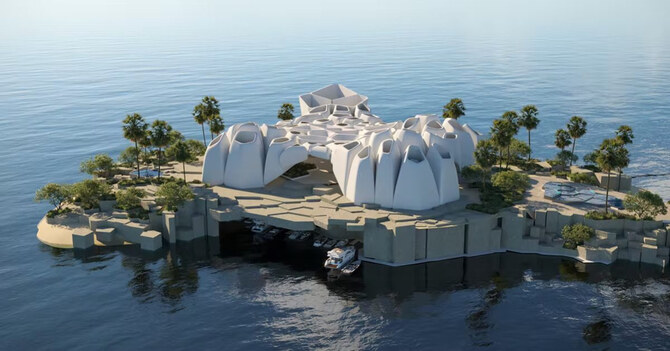RIYADH: Saudi Arabia has unveiled Ocean Central, a first-of-its-kind digital platform offering a view of marine health to aid global regeneration efforts.
The platform, revealed at the Future Investment Initiative by the Kingdom’s Ambassador to the US Princess Reema bint Bandar, was developed in partnership with Wave to integrate data, design, storytelling, and strategy into accessible insights.
Ocean Central allows users worldwide to understand the health trends of the sea, identify data gaps, and work toward comprehensive restoration.
Princess Reema highlighted the need for shared understanding and collaboration to achieve ambitious ocean regeneration goals. “Countries are setting ambitious targets to regenerate a thriving ocean, but what’s been missing is a clear view of the journey,” she said.
The ambassador continued: “By working together and leveraging data, Ocean Central will act as a catalyst for ocean regeneration by highlighting successful initiatives, identifying gaps in ocean data, and building a shared understanding of the ocean.”
In an interview with Arab News on the sidelines of FII, Alexandra Cousteau, chief navigator of Wave, expressed her excitement over the platform’s launch and noted that Ocean Central aims to foster a vision for restoration by 2050, grounded in science and actionable data.
“This is actually based in science… so this is something that's super exciting because it really grounds these ideas in reality,” Cousteau said.

Alexandra Cousteau, chief navigator of Wave. AN
She also highlighted the importance of data and knowledge sharing to achieve Saudi Arabia’s Vision 2030 goals, emphasizing that reaching these ambitious targets requires a clear understanding of current progress, existing challenges, and areas needing restoration.
“Vision 2030 is an ambitious and beautiful vision, and it's so exciting to see that commitment being made at a country level, and I think that in order to be able to reach a lot of those very ambitious goals, we need to know what's happening,” Cousteau said.
She added: “We need to know where we're making progress. We need to know where we're falling short. We need to know what we have, and we need to know what we need to restore and so having that information together in one place.”
The platform aligns with global objectives, integrating targets from the UN Sustainable Development Goals, the Kunming-Montreal Global Biodiversity Framework, and the 2015 Paris Agreement, to track both 2030 and 2050 milestones toward a regenerated ocean.
It facilitates the collection and analysis of data on marine biodiversity, coastal preservation, and other key areas to drive informed action.
Cousteau highlighted to Arab News the platform’s role in addressing critical knowledge gaps in ocean health, particularly for the Red Sea.
“Ocean Central will not be doing its own science,” she said, noting it will rely on existing, peer-reviewed datasets from institutions like UNESCO and the UN.
She encouraged Saudi scientists to contribute to filling these gaps, which would strengthen insights into Saudi Arabia’s coastal ecosystems.
In a panel discussion alongside Red Sea Global CEO John Pagano, Princess Reema said: “We all know that the health of our planet and our oceans and our ecosystems are all connected to our well-being.”
She said the ocean-related industries generate over $2.5 trillion in economic value per year globally, supporting the livelihoods of 3 billion people in industries that include seafood, port construction, and coastal tourism.
The Saudi envoy reiterated that economies can grow “but not at the expense of the ocean,” adding that “the investment in the blue economy has a trifecta of positive impact.”
She added: “This collaboration of well-being and economic investment in coastal communities really can be considered as part of the toolkit that can restore the damage that has been done to oceans. You don't have to have it separated. It's all one and the same.”
Pagano emphasized: “I think we've taken our oceans for far too long for granted.”
On the collaboration front, Cousteau told Arab News that Ocean Central is a platform for collaboration, adding: “We’re hoping to have everybody come together and not just use those in Central, but help us fill those gaps, provide stories, data, and perspective.”
She added: “I think that this is very much a collaborative tool. It’s about collective action; it’s about coming together and accelerating progress by working together. Ocean Central is going to be that place, and there is room for everybody to contribute.”
She further underscored Ocean Central’s aim to be a collaborative platform where input from nonprofits, governments, the private sector, and scientists helps address knowledge gaps.































